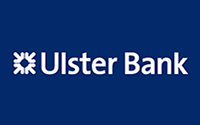
The country's construction sector has reported the fourth consecutive month of growth in activity in December.
The Ulster Bank construction purchasing managers index came in 58.3 last month, and while this was down from the 58.8 reading in November, the index still pointed to a substantial increase in construction activity.
A figure over 50 signals growth in a sector, while under 50 signals contraction.
The index shows that new orders were very strong, which is a good indicator of future activity in the sector. Purchasing activity and employment increased as a result of the new orders, while record levels of optimism were also recorded.
It also showed that the overall rise in activity was again centred on the residential and commercial sectors, with rates of expansion quickening across both sectors last month. But civil engineering activity continued to fall and at a sharper pace than in November.
The PMI showed that housing activity rose to 63.2 in December from 60.4 in November, while commercial activity increased to 62.3 from 60. But civil engineering activity fell to 43.2 from 45.7 in November.
Sentiment among construction firms rose to its highest level ever, with improving economic conditions behind the increase. Companies also predicted that more work overseas would support increased levels of activity.
The survey shows that increased demand contributed to a sharp rise in purchasing activity last month. A fourth month in input price increases in a row was recorded by building companies, although the rate of inflation eased again.
"The headline PMI index edged lower in December but remains at elevated levels and continues to signal strong expansion in overall activity, as it has done for the past four months," commented Ulster Bank's chief economist Simon Barry.
He noted that home-building remained the strongest sub-sector, with the latest improvement in the housing index taking the rate of expansion to its fastest in almost nine years.
Mr Barry said that Irish construction firms are optimistic that the signs of improvement that took hold over the second half of last year will be sustained through 2014.
"Perceptions of improved conditions in the Irish economy generally along with opportunities in overseas markets were the main drivers of the high confidence levels, as Irish constructors clearly believe that their industry has turned the corner following what has been a brutal downturn for the sector," he added.







